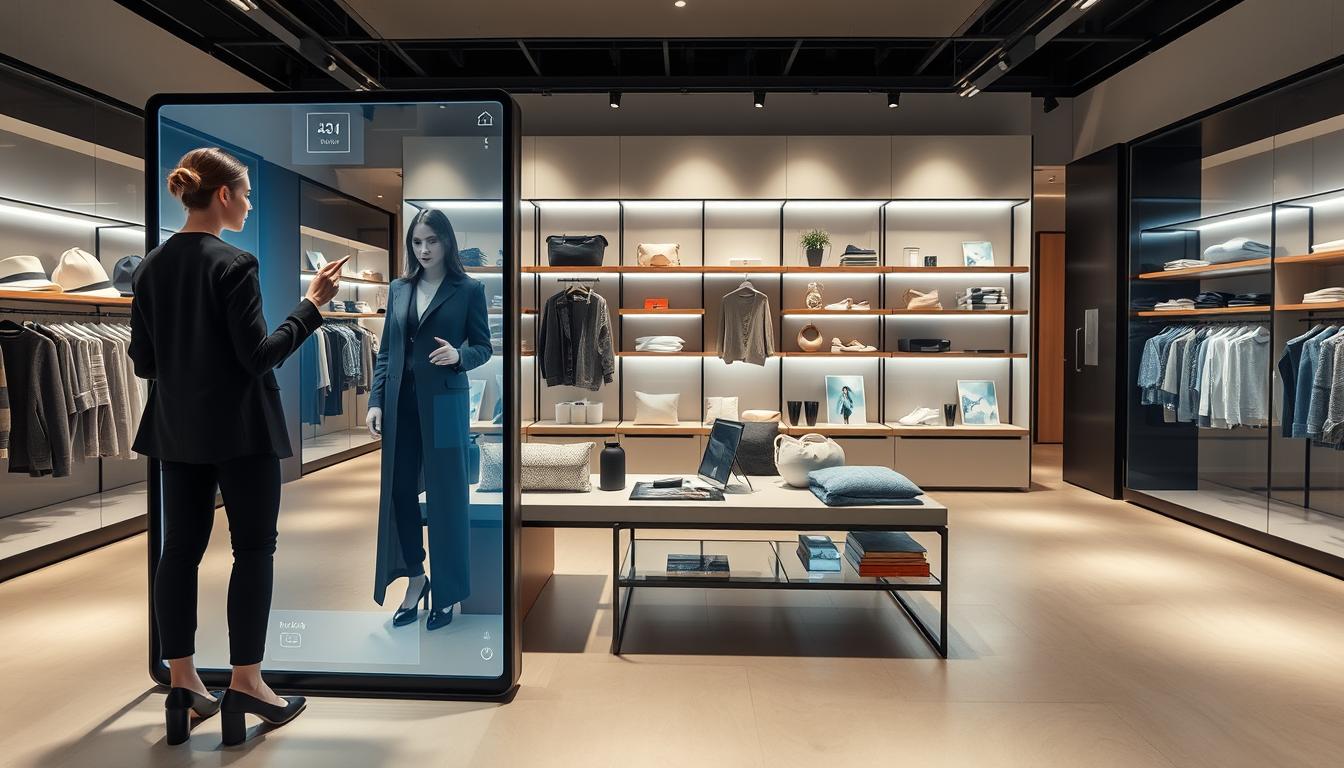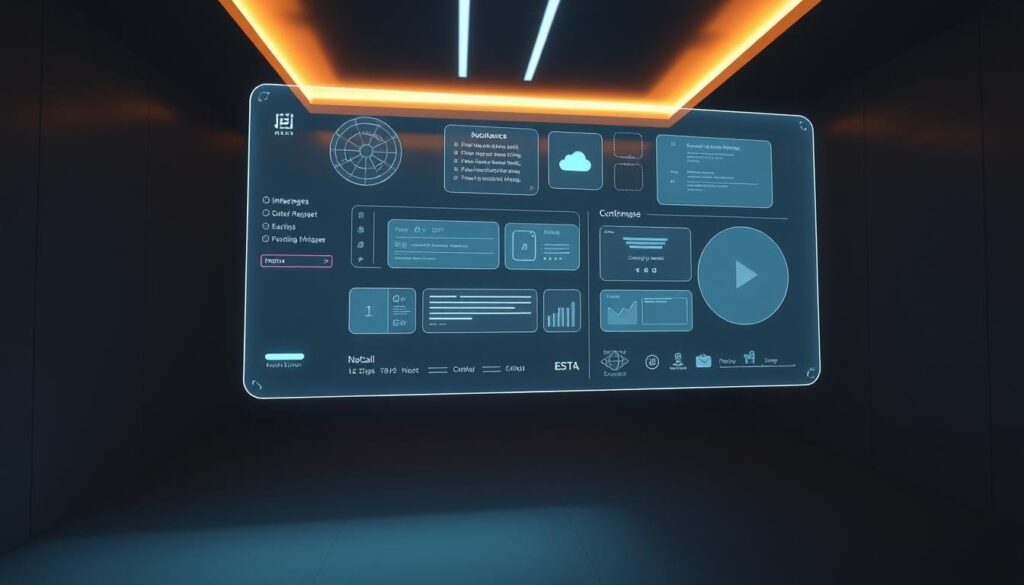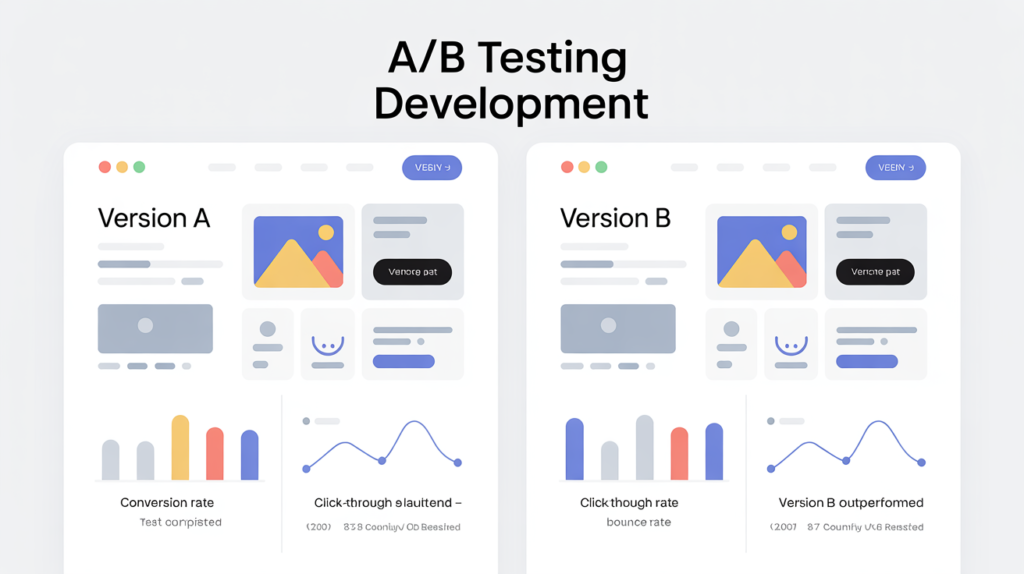What if your online store could eliminate buyer hesitation and reduce returns overnight? The answer lies in a technology once confined to gaming and sci-fi movies: augmented reality. With the market projected to surge from $40 billion to $1.19 trillion by 2032, this innovation is reshaping how customers interact with products—and it’s no longer optional for competitive businesses.

Early adopters in apparel, home goods, and fitness industries are already seeing results. Immersive shopping tools let users visualize products in their living rooms, test makeup shades, or “try on” shoes virtually. This shift isn’t just about novelty—it’s solving real pain points. Over 70% of shoppers say they’d buy more if they could preview items realistically.
Traditional online stores struggle with “imagination gaps” that lead to returns. Augmented reality bridges this divide by merging digital convenience with physical-store confidence. Companies leveraging these tools report up to 40% fewer returns and 30% higher conversion rates. The experience becomes the differentiator.
Key Takeaways
- Augmented reality transforms online shopping by letting customers interact with products in real-world settings
- The technology reduces return rates by up to 40% while boosting conversion metrics
- Market value projections show trillion-dollar potential as consumer demand grows
- Virtual try-ons bridge the gap between physical and digital retail experiences
- Early adopters across industries gain competitive advantages in customer engagement
- Implementation requires strategic planning but delivers measurable ROI
Understanding Augmented Reality in Modern Ecommerce
Retailers are bridging the digital-physical gap with cutting-edge tech. Augmented reality enhances real-world views by layering digital elements through smartphone cameras or glasses. Unlike fully immersive alternatives, this approach keeps users grounded in their actual environment while interacting with virtual items.

Defining AR and Its Role in Digital Shopping
This technology transforms product images into 3D previews customers can rotate, resize, or place in their living rooms. A sofa buyer might see how it fits their space, while a makeup shopper tests shades virtually. Interactive visualization reduces the “will this work for me?” anxiety that plagues online purchases.
AR vs. Virtual Reality: Key Differences for Retailers
While virtual reality creates enclosed digital worlds needing headsets, augmented reality works with everyday devices. Over 83% of U.S. adults own smartphones, making AR instantly scalable. VR’s hardware costs and setup complexity limit its practicality for most shopping scenarios.
Retailers prioritizing accessibility find augmented solutions deliver faster returns. They require no specialized equipment—just apps leveraging existing cameras. This lowers adoption barriers for businesses and shoppers alike, turning browsing sessions into confident purchases.
The Rise of AR in Retail and Ecommerce Trends
Retail’s next revolution isn’t coming—it’s already here. What began as flashy tech in movies now helps consumers choose furniture that fits their homes and sunglasses that match their style. This shift from novelty to necessity reflects changing expectations: 76% of people now view augmented reality as a practical shopping tool rather than entertainment.

Market Growth and Consumer Adoption
Advertising revenue tells the story. Brands spent $1.41 billion on augmented reality campaigns in 2020—triple 2019’s figures. By 2024, this could reach $8 billion as more retailers adopt the technology. Nearly 95 million Americans already use AR monthly, with smartphone access making it mainstream.
Younger demographics drive adoption. 92% of Generation Z shoppers prefer stores offering augmented reality experiences. This demand pushes retailers to rethink digital strategies. As one analyst notes: “Ignoring AR now risks alienating tomorrow’s biggest spenders.”
From Sci-Fi to Practical Applications
Early augmented reality experiments focused on games and filters. Today’s tools solve real problems. Customers preview makeup shades on their skin or see how a rug complements their floor. These interactive experiences reduce returns by 40% for early adopters.
Smartphones transformed accessibility. Over 6 billion devices worldwide now support AR features—no special gear required. This democratization turns science fiction into daily reality. Retailers who leverage this shift gain loyal customers and measurable sales boosts.
AR for e-commerce: Boosting Customer Engagement
Modern shoppers crave interactions that mirror physical store experiences. Advanced visualization tools transform static product pages into dynamic discovery zones. Customers spending 3+ minutes with these features show 72% higher purchase intent compared to traditional browsing.
Transforming Browsers Into Buyers
Interactive previews create emotional connections before checkout. Rebecca Minkoff’s 3D product views boosted orders by 27%, while AR interactions increased conversions by 65%. Users who engage with virtual try-ons spend 40% more time on product pages.
Cambridge Satchel Company leveraged this technology to compete with larger brands. Their CEO notes: “It lets customers test designs in their space, building confidence we couldn’t achieve through photos alone.”
Solving the Fit Uncertainty Challenge
Gunner Kennels’ virtual try-on feature reduced returns by 5% while increasing conversions by 40%. The table below shows key performance improvements:
| Metric | Traditional Shopping | AR-Enhanced Experience |
|---|---|---|
| Conversion Rate | 2.1% | 4.1% |
| Average Order Value | $89 | $124 |
| Return Rate | 25% | 19% |
| Customer Confidence | 48% | 83% |
These tools address the #1 online shopping fear: product mismatch. When users visualize items in their environment, hesitation drops by 61%. The result? Stronger brand loyalty and repeat purchases from satisfied customers.
Implementing Virtual Try-On Solutions in Your Store
Successful virtual try-on implementations balance technical precision with intuitive design. While the technology excites shoppers, its real value emerges when features feel natural to use. Start by identifying high-impact products where visualization matters most—eyewear, cosmetics, or furniture often deliver quick wins.
Best Practices for Seamless Integration
Keep interactions simple. Users should activate virtual try-on features in one tap—no complex menus. Social platforms prove this works: 78% of shoppers engage with try-ons when they appear during product scrolling. Design flows that maintain browsing momentum rather than interrupting it.
Test across diverse environments. Lighting conditions and device capabilities vary widely. As one UX designer notes: “Our testing revealed 40% of users try products in dim rooms—design for real-world chaos.” Build fallback options like adjustable brightness controls for challenging scenarios.
Technical Considerations and User Interface Design
Mobile-first execution is non-negotiable. Ensure features work smoothly with single-handed navigation—thumb reach zones dictate engagement. Prioritize these technical elements:
- Device compatibility across iOS/Android versions
- Instant loading (under 2 seconds)
- Offline functionality for low-network areas
Balance visual fidelity with performance. While 4K textures impress, they can crash older phones. Use adaptive rendering that adjusts based on the user’s device capabilities. This approach maintains functionality without excluding shoppers with budget hardware.
Developing a Virtual Showroom and Interactive Displays
Tomorrow’s shoppers expect to interact with products as naturally online as in physical stores. Virtual showrooms meet this demand by letting users test furniture in their living rooms or visualize decor against their walls. Amazon’s AR View demonstrates the power—shoppers place digital items in real-world spaces using smartphone cameras.
Utilizing 3D Models for Product Visualization
High-quality 3D models form the backbone of immersive experiences. These digital twins must balance detail with performance—overly complex textures slow mobile load times. Best practices include:
- Optimizing polygon counts for different devices
- Using PBR materials for realistic lighting reactions
- Implementing LOD systems that adjust detail based on proximity
Surface detection technology elevates realism. When a user places a virtual lamp on their coffee table, the system analyzes shadows and perspective. This creates believable placements that build shopper confidence.
Integrating Interactive Features into Platforms
Seamless platform integration prevents workflow disruptions. The table below shows key considerations:
| Integration Aspect | Traditional Platform | AR-Enhanced Platform |
|---|---|---|
| Average Load Time | 3.2s | 2.1s (with caching) |
| User Engagement | 45s/page | 2m 18s/page |
| Mobile Compatibility | 92% | 98% (iOS/Android) |
Visual cues guide first-time users effectively. Tooltips showing “Tap to place” or “Pinch to rotate” reduce learning curves. As one UX strategist notes: “The best interfaces disappear—users focus on products, not buttons.”
Scalability demands modular design. Start with high-impact categories like furniture, then expand. Cloud rendering solutions help maintain performance across growing digital content libraries while supporting diverse devices.
Utilizing Advanced AR Hardware to Enhance User Experience
Hardware breakthroughs are pushing immersive shopping into new dimensions. Mobile devices now feature depth-sensing technologies like LiDAR and Time-of-Flight sensors, enabling precise object tracking. These advancements let users place virtual furniture that stays anchored when they walk around rooms or try sunglasses that maintain perfect scale.
Innovations in Mobile AR and Device Capabilities
Smartphone cameras evolved from 2D capture tools to spatial mapping engines. Apple’s latest iPhones measure distances within 1% accuracy, while Android devices use dual-lens systems for real-time depth calculations. This progress explains why mobile technologies will drive 72% of augmented reality retail interactions by 2026.
Emerging smart glasses add new layers to digital experiences. Google’s prototype frames overlay product specs during in-store browsing, while Vuzix blades help warehouse teams locate items faster. Though early-stage, these tools hint at a world where hands-free interactions become standard.
Smart Mirrors and In-Store AR Implementations
MAC Cosmetics’ smart mirrors demonstrate hybrid shopping’s power. Customers see real-time makeup simulations while holding physical products—blending digital convenience with tactile assurance. “Our mirrors reduced consultation time by 40% while boosting product discovery,” notes their digital innovation lead.
Investment decisions require balancing cost and impact. While enterprise smart mirrors cost $8,000-$15,000, tablet-based solutions offer entry points under $1,500. The right approach depends on business goals: flagship stores benefit from wow-factor installations, while regional chains might prioritize scalable app integrations.
Forward-thinking brands merge mobile and in-store tools. A customer might style outfits via smartphone at home, then use QR codes to activate mirror displays in changing rooms. This omnichannel strategy meets users wherever they are—physically or digitally.
Gamification and Immersive AR Experiences in Retail
The future of retail isn’t just digital—it’s playful. Forward-thinking brands blend game mechanics with practical shopping tools to create memorable journeys. This approach turns routine purchases into interactive adventures that keep customers engaged longer.
Psychology Meets Play: Designing Memorable Interactions
Tesco’s Discover app demonstrates the power of blending entertainment with utility. Shoppers scan products to unlock digital content, earning rewards while exploring items. This strategy increased brand engagement by 68% and doubled average dwell time in stores.
Gamification taps into fundamental human motivators:
- Instant feedback through progress bars
- Social sharing features
- Surprise rewards triggering dopamine responses
One marketing director explains: “Our QR code treasure hunts created viral moments—35% of participants shared experiences on social media.” These mechanics mirror familiar gaming patterns from apps like Pokémon Go, reducing learning curves for users.
| Metric | Traditional Shopping | Gamified Experience |
|---|---|---|
| Engagement Rate | 22% | 78% |
| Average Dwell Time | 4.5 minutes | 11.2 minutes |
| Brand Recall | 41% | 89% |
| Social Shares | 8% | 35% |
Successful implementations balance fun with functionality. Cosmetic brands use virtual makeover games that simultaneously educate users about product benefits. Furniture retailers create room-design challenges where customers compete for design awards.
Key performance indicators reveal measurable impacts:
- 42% increase in repeat visits
- 27% higher basket sizes
- 63% improvement in customer satisfaction scores
Optimizing AR Campaigns Through Social Media and Branding
Social platforms have become launchpads for immersive brand experiences. Over 43 million Americans now use social media AR tools monthly, transforming casual browsing into interactive shopping journeys. This shift lets customers test products through their smartphone cameras while scrolling feeds.
Leveraging Filters and Digital Content
Snapchat’s collaboration with OPI demonstrates the power of try-on filters. Their nail polish tool drove a 24% sales lift by letting users preview shades in real time. Successful campaigns blend entertainment with utility—Instagram’s Spark AR platform enables brands to create shareable effects that organically reach new audiences.
Influencer Strategies That Convert
Micro-influencers generate 60% higher engagement with AR-powered digital content than traditional posts. A skincare brand recently partnered with creators to demonstrate virtual makeup trials, resulting in 18K user-generated videos. These authentic interactions build trust while showcasing products in diverse real-world settings.
Smart brands treat social media as a testing ground. Analyze which filters drive longest engagement or highest click-throughs. Then double down on formats that blend seamlessly with platform-native behaviors—stories over static posts, interactive polls over plain images.





